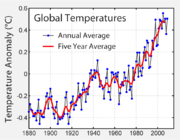Cheaper LEDs
Flexible arrays of bright inorganic LEDs could mean cheaper displays and lighting.
THURSDAY, AUGUST 20, 2009 |
A new technique makes it possible to print flexible arrays of thin inorganic light-emitting diodes for displays and lighting. The new printing process is a hybrid between the methods currently used to make inorganic and organic LEDs, and it brings some of the advantages of each, combining the flexibility, thinness and ease of manufacturing organic polymers with the brightness and long-term stability of inorganic compounds. It could be used to make high-quality flexible displays and less expensive LED lighting systems.
 |
| Stretchy screens: Arrays of tiny red inorganic LEDs can be printed on stretchable rubber substrate to conform to curves. The gold-colored wires are electrical connections and are also flexible. Credit: Science/AAAS |
Inorganic LEDs are bright and long lasting, but the expense of manufacturing them has led to them being used mainly in niche applications such as billboard-size displays for sports arenas. What's more, the manufacturing process for making inorganic LED displays is complex, because each LED must be individually cut and placed, says John Rogers, a materials science professor in the Beckman Institute at the University of Illinois at Urbana-Champaign. So display manufacturers have turned to organic materials, which can be printed and are cheaper. While LED-based lighting systems are attractive because of their low energy consumption, they remain expensive. The new printing process, developed by Rogers and described today in the journalScience, could bring down the cost of inorganic LEDs because it would require less material and simpler manufacturing techniques.
Displays based on inorganic LEDs, says Nicholas Colaneri, director of the Flexible Display Center at Arizona State University in Tempe, "are not generally economical to make." The manufacturing process involves sawing wafers of semiconducting materials such as gallium arsenide, picking and placing each piece individually using robotics, and adding electrical connections one at a time.









